From Urban Solution to Panoramic Adventure
In 2021, Mexico City unveiled its innovative Cablebús system, a network of gondola lifts intended to revolutionize urban mobility. The project aimed to integrate historically under-served neighborhoods with the city’s sprawling public transportation network, providing a much-needed lifeline for its residents. What began as a practical solution to a logistical challenge, however, has become one of Mexico City’s most intriguing and accessible tourist attractions. The Cablebús now serves a remarkable dual purpose, not only easing daily commutes but also offering locals and visitors a unique perspective of the city via an alluring sky-high experience.
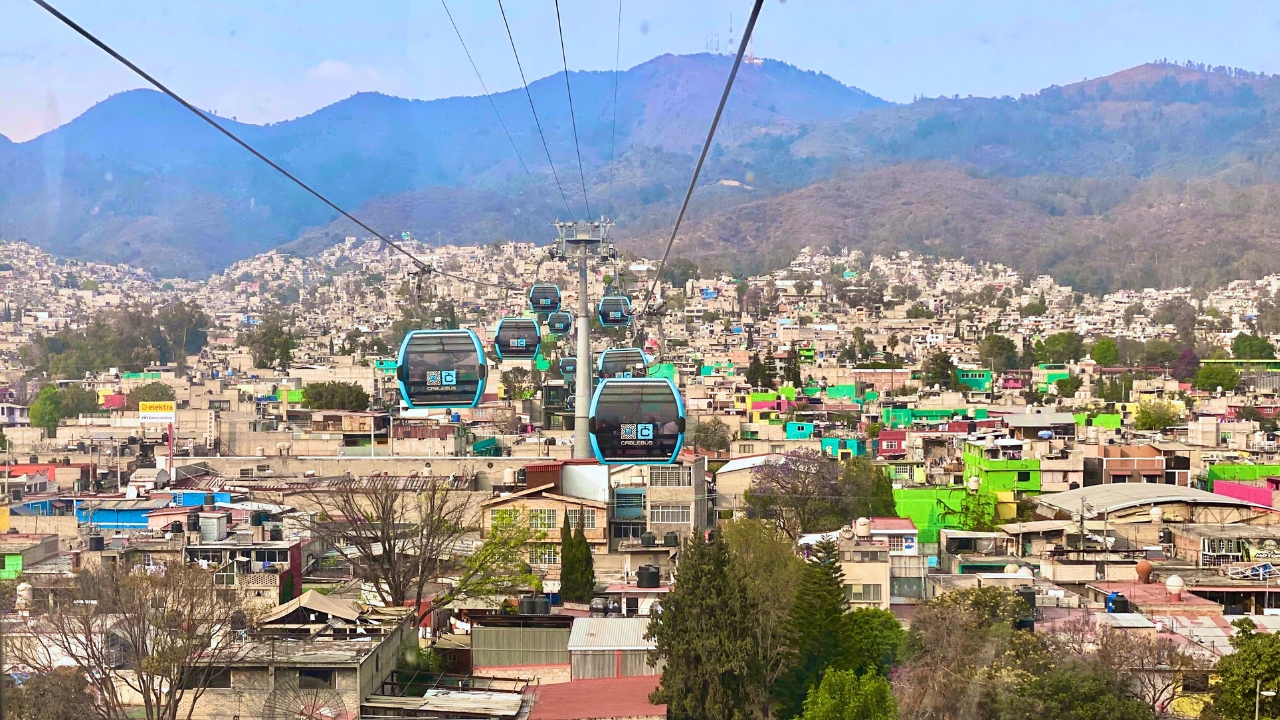
The story of Mexico City’s Cablebús begins not with grand tourist visions, but with a pragmatic need to improve the lives of its citizens. Conceived and implemented as a vital component of the city’s integrated transportation strategy, the Cablebús aimed to connect marginalized communities, often perched on steep hillsides, to the wider urban core and its economic opportunities. Its primary function was to provide a safe, efficient, and affordable means of commuting for residents who had previously faced long and difficult journeys.
Reception among locals has been positive, with many praising the significant reduction in travel time and improved accessibility to jobs, education, and essential services. While ridership consists primarily of daily commuters, a curious phenomenon has begun to unfold. Tourists, initially drawn by word-of-mouth, started to discover the Cablebús for themselves. Soon, the aerial cable cars began appearing in travel blogs and social media feeds, showcasing breathtaking panoramic views of the sprawling metropolis and the surrounding mountains. As the attention continues to grow, the Cablebús system is gradually transforming from a purely practical solution into an unlikely attraction for tourists.
The Network: Cablebús Line 1
“I’ve never ridden these gondolas before. This is so cool!” exclaimed Amaya, her excitement matching that of a child discovering an amusement park ride. I invited a friend, a Mexico City native, to accompany me. We embarked onto Line 1, traveling from Indios Verdes to the terminus and back. While commuters around us displayed the weary expressions of routine travel, we experienced the pure joy of discovery. The Sierra de Guadalupe mountains provided a stunning contrast to the vibrant, densely packed homes that appeared so captivating from our elevated vantage point. After disembarking, we celebrated with tacos, still buzzing with the thrill of having accessed a magnificent hidden spectacle hiding in the open skies.
The Cablebús system has grown significantly since its inception, with multiple lines connecting various parts of Mexico City. Line 1 serves the northernmost area of Gustavo A. Madero. It runs from Indios Verdes to Cuautepec, passing through the Sierra de Guadalupe, a mountain range in the state of Mexico. The line includes six stations: Indios Verdes, Ticomán, La Pastora, Campos Revolución, Cuautepec, and Tlalpexco.
Prior to the Cablebús, community members faced challenging commutes across steep terrain between these stations, depending on overcrowded buses and cars that resulted in unpredictable travel times and severe traffic congestion. The aerial system delivers a swift and dependable solution that has dramatically improved mobility. Beyond passenger benefits, Line 1 has contributed to environmental improvements by reducing vehicular emissions and easing traffic bottlenecks, enhancing the area’s sustainability and livability.
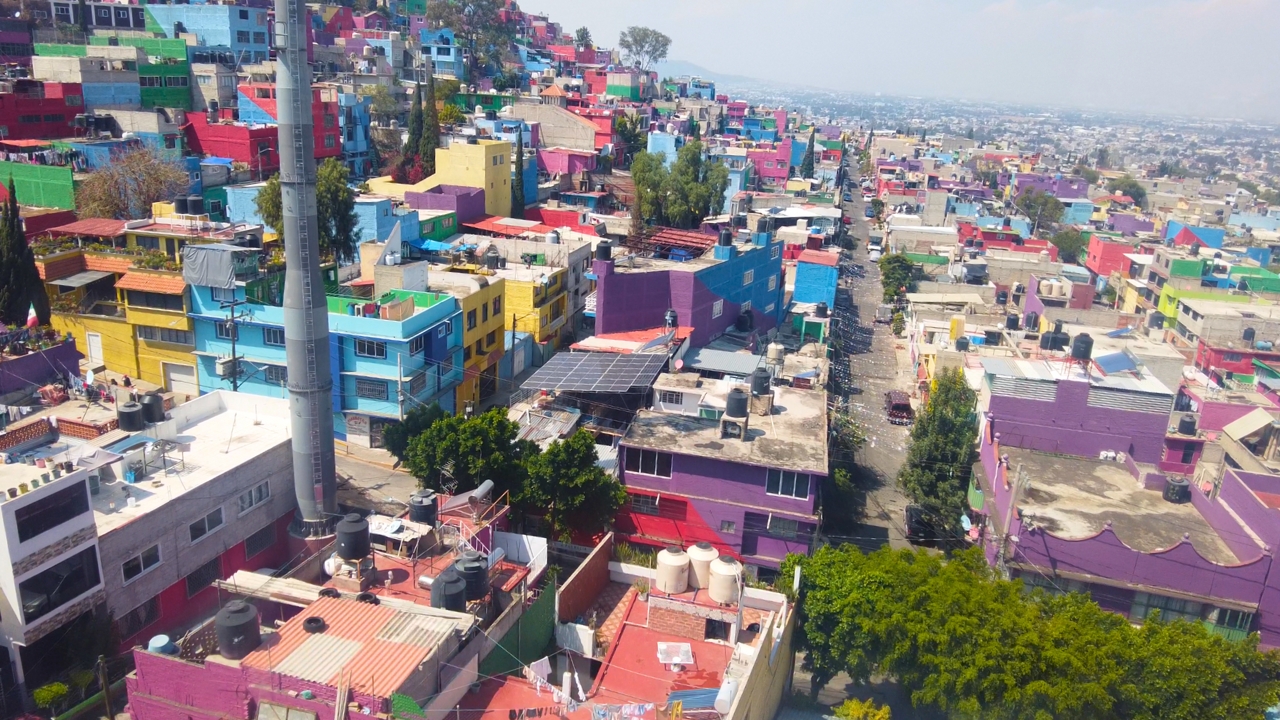
Cablebús Line 2
Fernando Gabriel, our Airbnb tour guide with a passion for sharing Mexico City’s hidden gems, began offering Cablebús Line 2 tours in June 2022. Fernando quickly recognized that the aerial gondolas could serve as both essential transportation for locals and a spectacular viewpoint for visitors. His tour business provides illuminating experiences that showcase the history, culture, and neighborhood development initiatives along the Cablebús route. Says Fernando about his intentions, “One of my goals is to spread the offer of tourism to the areas that need it more. I love sharing it with people who want to get deep insights about Mexico City because it’s a big, complex city. It’s a good pretext to talk about Mexican culture and history.”
The Mexico City Cablebús Line 2 serves the greater area of Iztapalapa to the edges of the State of Mexico, and holds the Guinness World Record for being the longest cable car system in the world at 10.6 kilometers. Iztapalapa, with a population of almost 2 million, is the most populous borough in Mexico City. It is located on the eastern side of the city and has experienced significant urbanization and population growth since the 1970s. The Cablebús network is part of a broader strategy to combat social inequality by improving access to opportunities for those living in marginalized neighborhoods.
Similar to Line 1, Line 2 was implemented to improve connectivity in this densely populated area by linking residents to metro stations, thereby enhancing access to central areas of Mexico City. This line runs from Constitución de 1917 to Santa Marta Acatitla, passing through several neighborhoods in these boroughs. The line includes six stations: Constitución de 1917, Quetzalcóatl, Las Torres Buenavista, Xalpa, Lomas de la Estancia, San Miguel Teotongo, and Santa Marta.
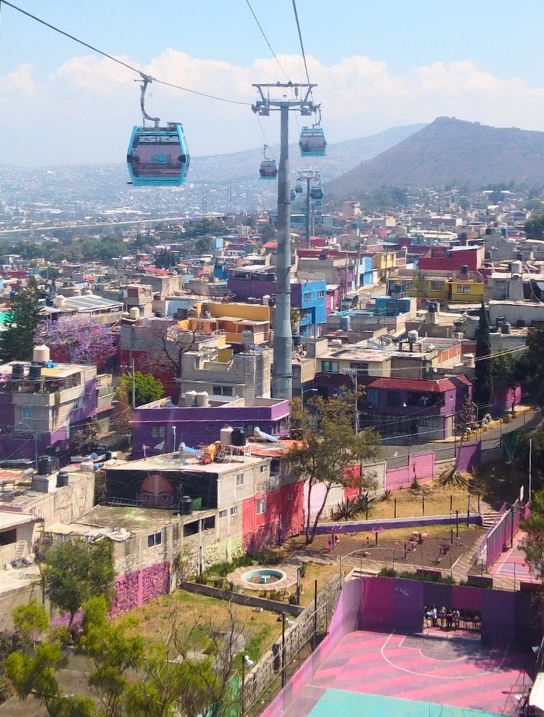
For us visitors, the Cablebús journey is a step-by-step adventure that culminated with anticipation as we ascended into the sky. “Look below here and you will see murals on the roof,” Fernando instructs. In Iztapalapa, the Cablebús system has become a canvas for urban art, thanks to a project involving around 40 artists who painted approximately 100 murals on rooftops and facades along the route. These murals feature themes such as female empowerment, traditional crafts, and migration, reflecting the cultural identity of the community.
The ride offers breathtaking views of the city, with numerous photo opportunities that showcase the vibrant urban landscape. The Cablebús is cost-effective compared to traditional tours, offering an authentic experience that immerses visitors in local life. Unlike conventional city tours, the Cablebús provides unique perspectives of the city unavailable elsewhere. “My typical customers are people who want to get off the beaten path and also people who have an interest in a city’s transportation systems,” Fernando reflected thoughtfully.
The tour combines a complete overview of Mexico City’s transit systems with Iztapalapa’s highlights: vibrant murals, local market tacos, an airplane-turned-library from the Utopias Program, and a traditional pulquería stop. Packed with facts, yet accessible to both international and Mexican visitors, this information-rich, four-hour experience serves as the perfect introduction to the city.
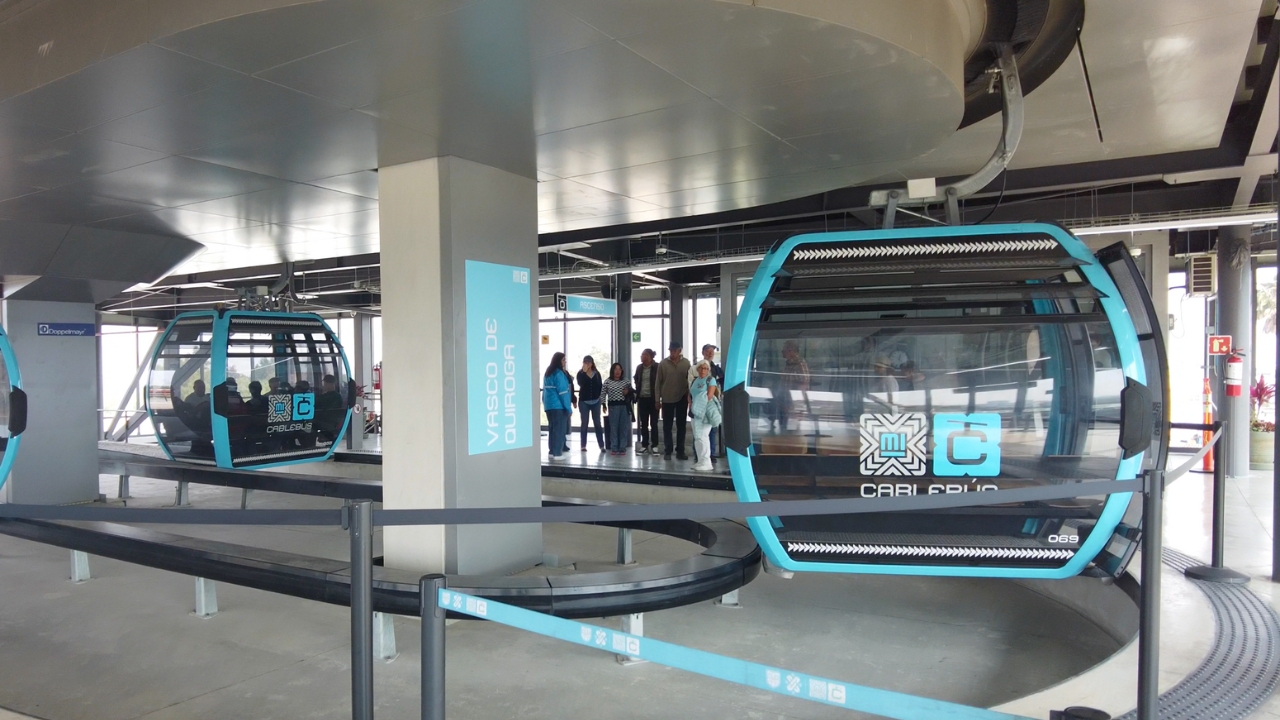
Cablebús Line 3
I embarked onto Line 3 alone, comfortable with my knowledge of Chapultepec Park and confident in my navigation abilities. Sure enough, I was met with hundreds of locals also experiencing the gondolas for the first time—these weren’t daily commuters but excited explorers. Adults and children alike bubbled with anticipation over their city’s newest attraction. After queuing with other eager riders, ten of us were ushered into a cabin, collectively holding our breath as we were lifted high into the air.
As we glided over the Panteón de Dolores, I was treated to a unique perspective on Mexico’s largest and most historic cemetery. From above, the sprawling expanse of mausoleums stretches out like an intricate tapestry, with paths weaving through the meticulously arranged plots.
The latest addition, Line 3, has been particularly noteworthy after being inaugurated in 2024. It connects the bustling business district of Santa Fe with the iconic Chapultepec Park, enhancing mobility and tourism in the area. This line spans approximately 5.42 kilometers and includes six stations: Los Pinos / Constituyentes, Panteón Dolores, Charrería, PARCUR / Colegio de Arquitectos, Cineteca Nacional / Bodega de Arte, and Vasco de Quiroga.
By reducing travel times from 40 to 20 minutes, Cablebús Line 3 significantly improves connectivity for commuters, making it a vital part of the Chapultepec: Nature and Culture project.
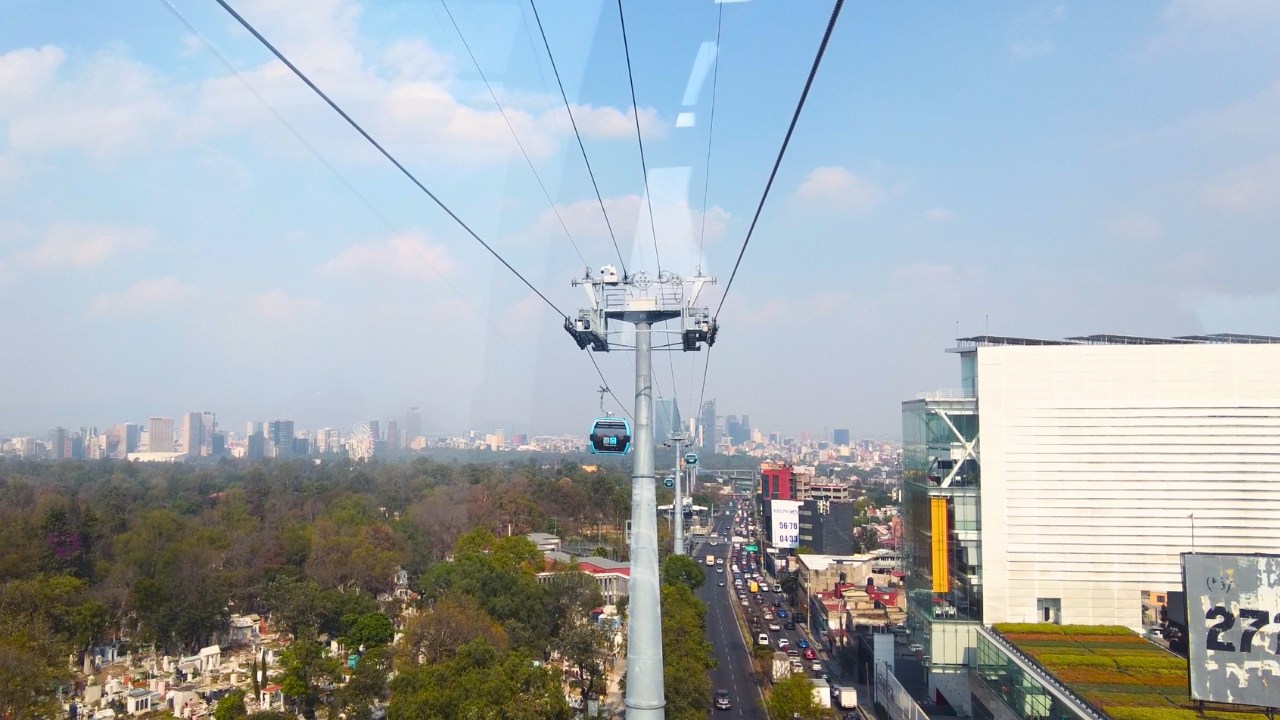
Economic and Social Impact
The Cablebús has profoundly transformed previously overlooked neighborhoods by integrating them into the city’s economic fabric. Local businesses near the stations have seen a surge in foot traffic, leading to increased economic activity. Community perspectives on the system’s impact are largely positive, with residents appreciating the enhanced connectivity and economic opportunities.
“The locals are proud and excited that international visitors are coming to see their neighborhood and learn about their culture because that’s never happened before,” gleams Fernando. “Before this tour, this community didn’t even know what a tourist was. Now they’re used to seeing me pass through with my groups.” Fernando has developed strong relationships with the locals of Iztapalapa as well as local businesses.
Just a few years after its implementation, the Cablebús system is already demonstrating measurable benefits. Lines 1 and 2 now serve over 100,000 passengers daily, with Line 1 achieving an impressive 45 percent reduction in travel times. Additionally, many users report experiencing modest decreases in their transportation expenses, adding financial relief to the system’s time-saving advantages.
The Cablebús has achieved remarkable success as a commuter solution and as a budding tourist attraction, demonstrating how practical infrastructure can enhance urban tourism.
Overall, the Cablebús system has been instrumental in boosting economic activity, creating jobs, and improving the quality of life for residents in Mexico City’s peripheral neighborhoods.
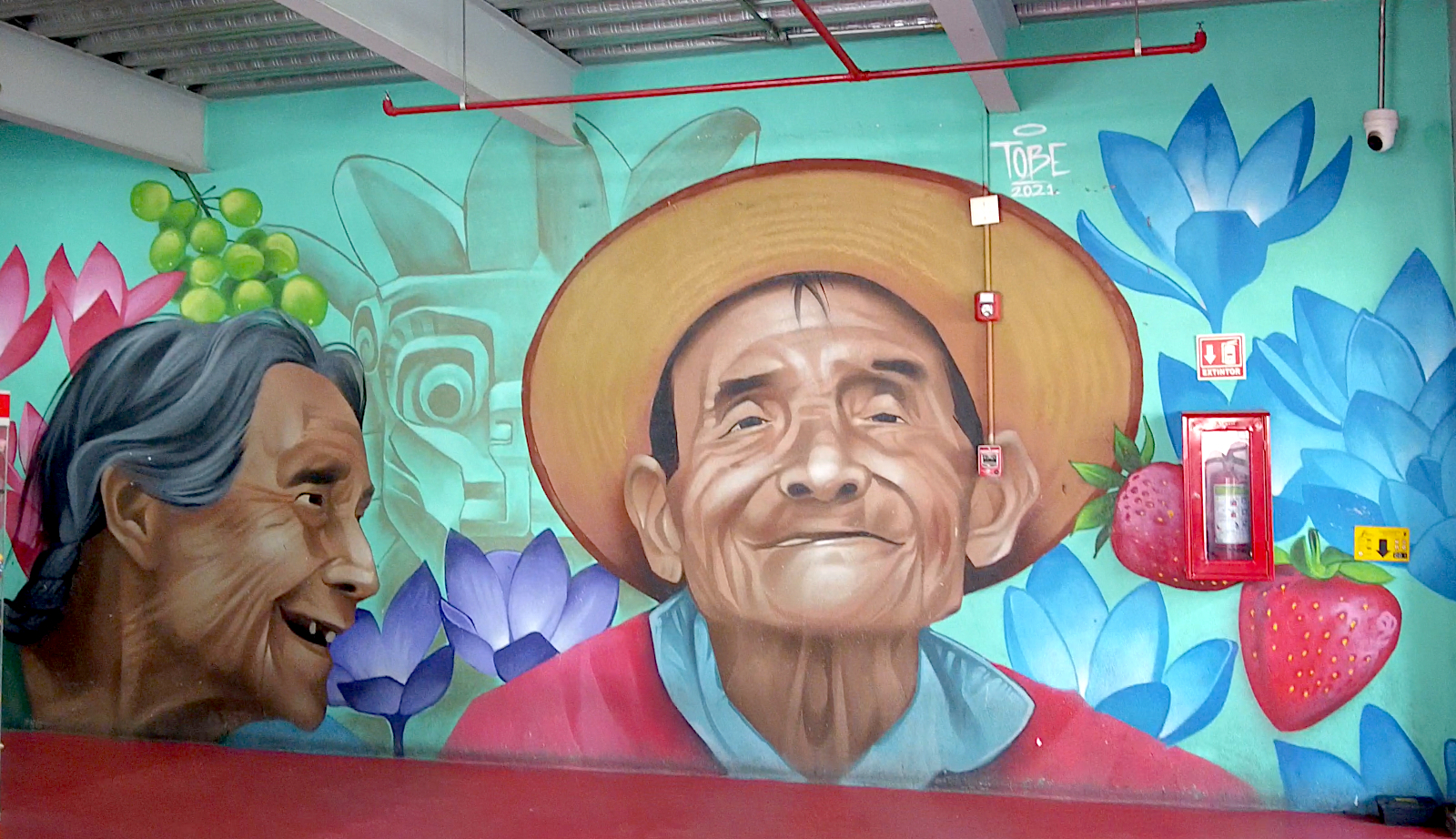
Travel Tips
For First-Timers
- Take line 1 with a local if you can’t find a tour.
- Take line 2 with a tour, such as the amazing Airbnb tour that I took.
- Line 3 can be taken without a guide. Check the Cablebús map to plan your route in advance, especially if you’re new to the area. See the two entrance points below in How To Get There.
- Avoid riding the Cablebús on weekdays between the hours of 7:00am to 10:00am and 5:00pm to 8:00pm out of respect for commuters and for a better ride.
- Respect local customs and the neighborhoods you pass through.
- Cost (Feb 2025): $7 Pesos. You can use your Metrocard for the Cablebús.
- As with any tour or outing, keep a close eye on your belongings, especially in crowded areas.
How to Get There & What to See
Cablebús Line 1: Indios Verdes to Cuautepec
- Starting Point: Indios Verdes.
- The Indios Verdes Cablebús station is located near the Indios Verdes Metro station, which is on Metro Line 3. To get to the Cablebús entrance, exit the Metro at the southernmost exit (Exit J) and follow the signs. You will need to make a quick U-turn at the top of the stairs and walk through the market to reach the Cablebús entrance.
- Start your journey at Indios Verdes, where you can see the iconic bronze statues of Mexica Tlatoani (Kings) Itzcóatl and Ahuizotl in Mestizaje Park. The nearby market offers a vibrant atmosphere and local shopping.
Cablebús Line 2: Constitución de 1917 to Santa Marta Acatitla
- Starting Point: Constitución de 1917.
- The Constitución de 1917 Cablebús station is accessible via Metro Line 8, which takes you directly to the station. From the Metro, follow the signs to the Cablebús entrance.
- Quetzalcoatl Station: Explore the Mercado D.U. Quetzalcoatl for local shopping and dining.
Cablebús Line 3, option One: Panteón de Dolores Station
- Panteón de Dolores is a direct entrance. You can reach it via ride-sharing or public transportation. The nearest Metro station is Chapultepec on Line 1, but it’s a bit of a walk.
- Advantages: Closer to the main road, making it easier to access without navigating the park.
Cablebús Line 3, option Two: Los Pinos/Constituyentes Station
- Situated in Chapultepec Park, near the former presidential residence of Los Pinos.
- Reach this station by walking through the park or taking a taxi/ride-sharing service. The nearest Metro station is Chapultepec on Line 1.
- Advantages: Offers scenic park views and is part of the “Chapultepec: Nature and Culture” project, featuring attractions like the new Cineteca Nacional.

